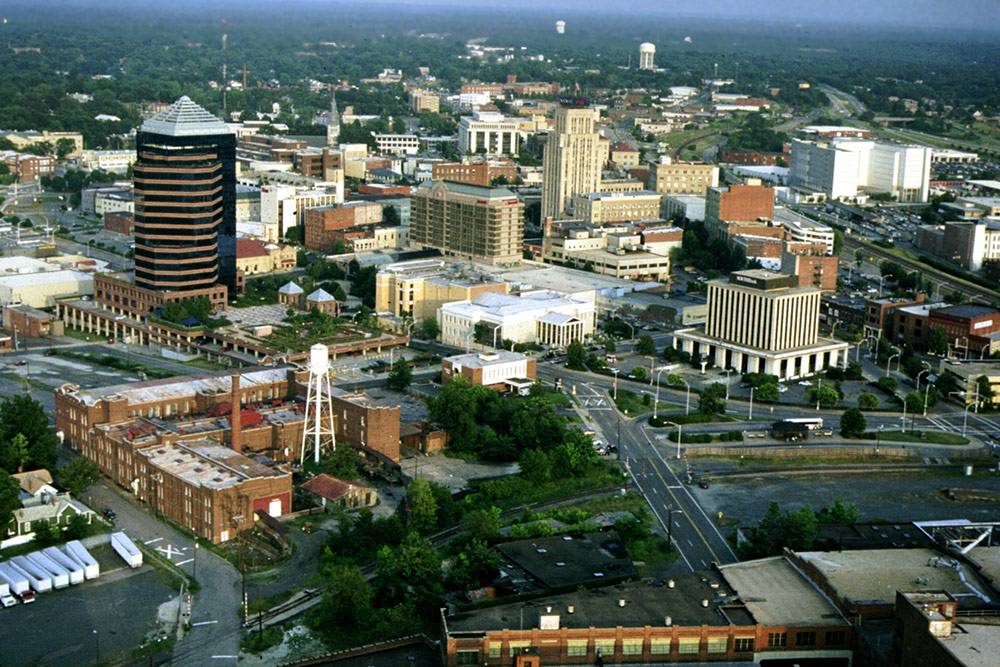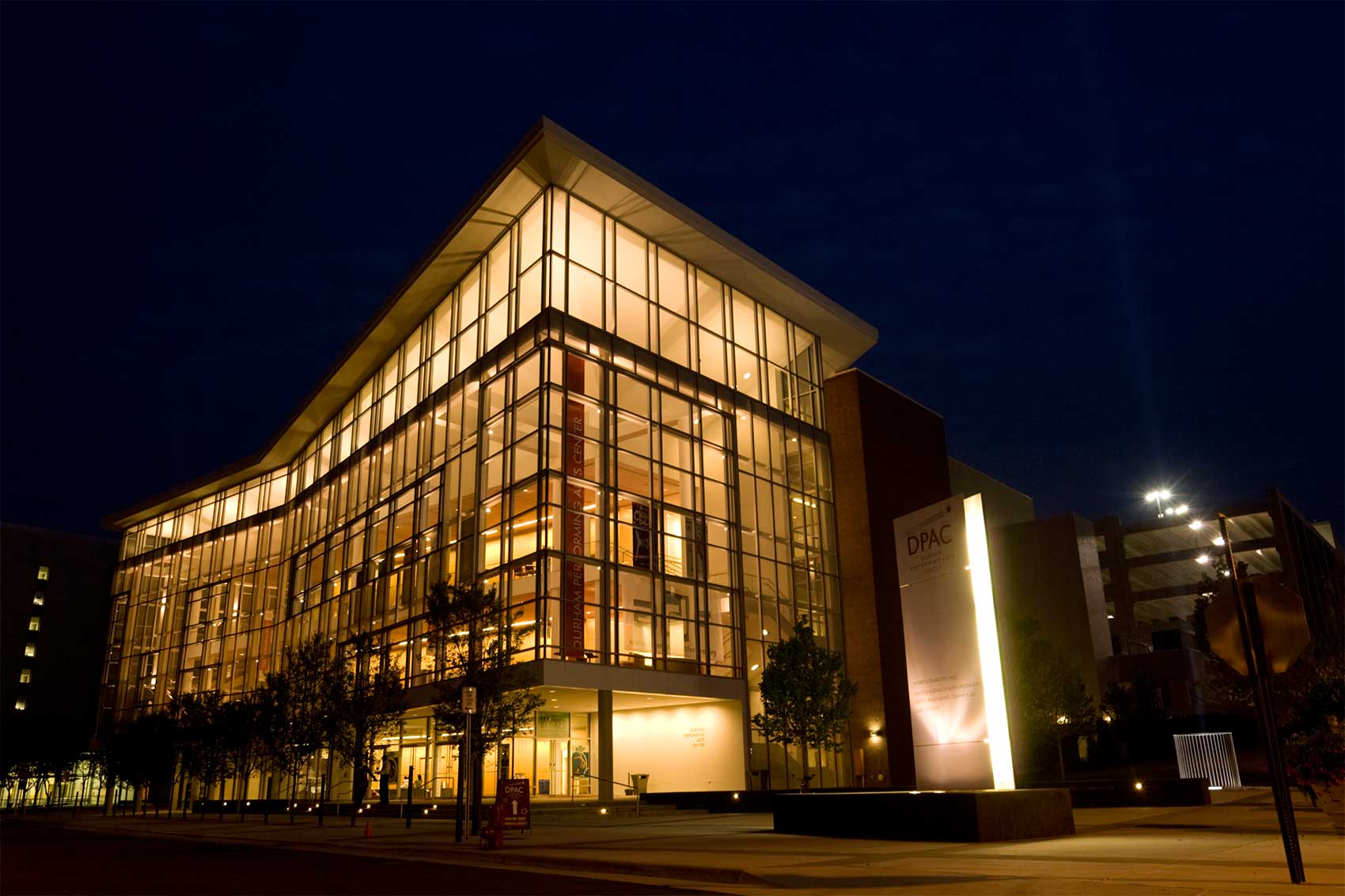
Duke was not always in Durham: it was founded as a one-room schoolhouse 75 miles west in rural Randolph County.
In the early 1890s, this school, by then called Trinity College, chose Durham as its home, packed up its library and college bell and clock on a boxcar, and moved to this new locale.
The college was lured by the support of Durham citizens who wanted to enrich their city with a higher education presence: Julian S. Carr, who gave the Blackwell Park fairground as the land for Trinity College; and Washington Duke, who put up money for an endowment.

 In selecting Durham, Trinity College chose a distinctive kind of place as its home. Durham had no old economy or old society -- it was a startup community, a city of entrepreneurs and business creators. Just as critically, a vibrantly diverse population participated in civic and business creation.
In selecting Durham, Trinity College chose a distinctive kind of place as its home. Durham had no old economy or old society -- it was a startup community, a city of entrepreneurs and business creators. Just as critically, a vibrantly diverse population participated in civic and business creation.
Strikingly, the business entrepreneur who partnered with Trinity’s leaders to bring the college to Durham also partnered across the color line. Washington Duke was friendly with the black entrepreneur John Merrick, pictured above right, and played a role in founding what became the biggest black-owned business in America, North Carolina Mutual Life Insurance Company. He supported Dr. James E. Shepard in the work of founding a black college in Durham -- the North Carolina College for Negroes, today’s N.C. Central. And though health care (like education) remained segregated in those days, Washington Duke, pictured above left, was an early supporter of creating a hospital for African Americans in Durham, Lincoln Hospital.
As I look back on the 12 years that I’ve served as president of Duke, I see this same multidimensional partnership in action today. The economic revival of downtown Durham owes much to Jim Goodmon’s vision for renovating the American Tobacco complex. Duke was not the principal driver of this project, but it was a critical partner: its commitment to lease sizeable space helped the developer secure the project’s financing and so enabled it to proceed.

DPAC lights up downtown Durham. It quickly became one of the nation's most visited theater venues after it opened in 2008.
Similarly, Duke did not dream up DPAC, another magnet of the revived downtown, but an early Duke co-investment helped this dream advance to a reality. Durham Central Park came together with Duke partnership. So did other downtown warehouses that have become condos, offices and restaurants. So has the hulking Chesterfield Building, empty since 1999, but now about to be reborn as a high-end research facility with mixed-use tenants on the first floor.
We’ve all enjoyed the economic revival that has won Durham fame as one of America’s hot new cities. New buildings have been joined by new jobs (Duke University now has 3,500 employees working downtown), new amenities, and a new sense of dynamism. If Duke has contributed to this revival, we have certainly also benefitted from it, as our faculty, students and employees take part in this restored city’s civic energy.

Lincoln Hospital, in 1949. Financed largely by the Duke family, the hospital has been an important means of access to health care for local residents.
But along with cool new things, Durham continues to display the inequalities and social challenges that afflict all American cities. From an educator’s point of view, this mix presents an important opportunity. We must continue to facilitate ways for Duke students to engage with Durham, be taught by Durham, and carry the insights of Durham with them when they leave Duke to use their talents to address our society’s problems in later life.
Durham’s challenges aren’t for Duke to seek to own and control, but as facts of our community, they are our business, and here, too, Duke has a critical role to play.
Mayor Bell’s anti-poverty initiative recognizes that poverty is a multi-sided condition requiring attack on multiple fronts. It’s a jobs and income issue, but also an education issue, and a health issue, and many more. Duke has strengths and resources that can help in many of these domains.

Project BOOST at Duke provides summer creative learning experiences for Durham schoolchildren.
For instance, we will never close the gap of income and achievement in later life if children continue to have wide disparities of preparation in early life. I’m proud that Bert L’Homme and the Durham Public Schools Board of Education have made addressing early childhood education inequality a priority. And I’m proud that Phail Wynn, Duke's Vice President for Durham and Regional Affairs, and Duke students, teachers and researchers have been active in this project from the start.
Unequal economic circumstances also mean that families bear unequal health burdens that compound over time. Duke is home to one of the nation’s most celebrated health systems, which has made a priority of healthy communities. Under the leadership of Victor Dzau and now of Eugene Washington, Duke Health helped to power the Healthy Durham initiative. Going forward, Duke Health will be more deeply involved in promoting healthy living before people get sick, rather than deal with the consequences after.
It takes the active commitment of every member to bring the shared life of a community to its highest state. Duke and Durham chose each other, and our destinies are still entwined. At Duke we are grateful for the benefits of living in Durham, and we are committed to doing our part to increase those benefits for all.
Below: President Brodhead and Duke students work on a community project in Durham.
